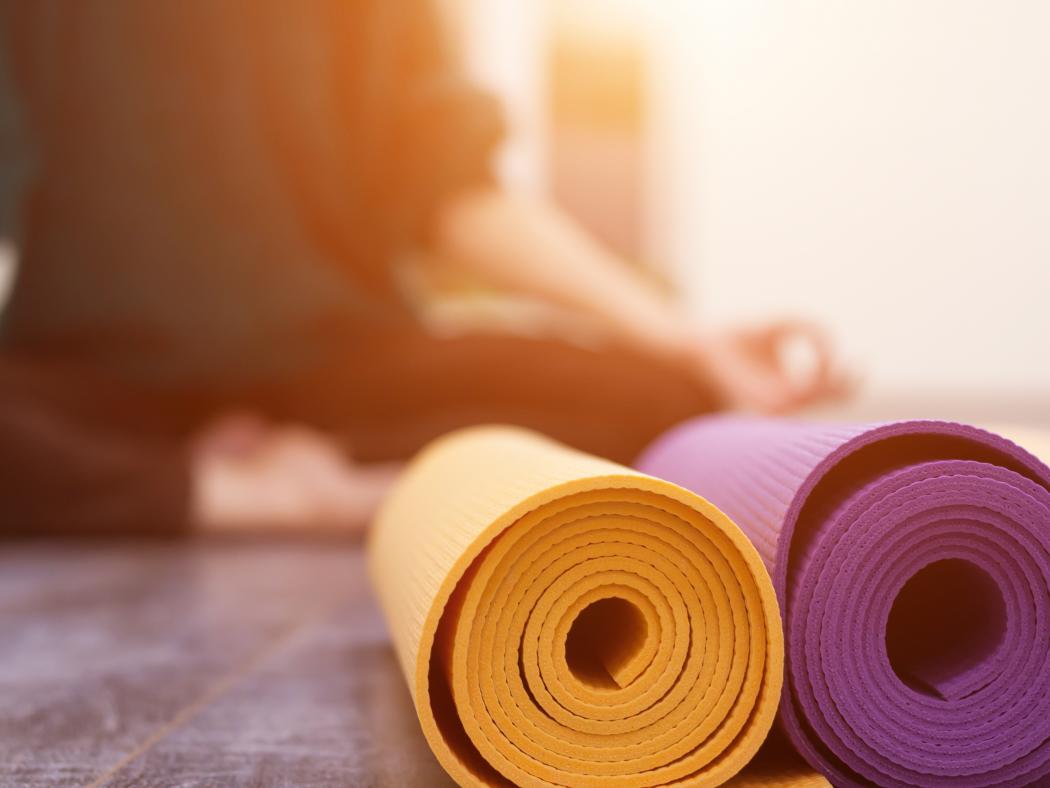Teaching Yoga & Coming Home to Your Self

“I’ve tried meditating before, but I’m really bad at it! My mind just won’t stop moving.”
 After a decade of teaching yoga, I’ve heard this statement from many students. My response is always a sympathetic and enthusiastic — “You are not alone!” Meditation is often misinterpreted as mental silence and the absence of thought. But of course, you will feel like a failure if this is your goal. The human mind is designed for movement, analysis, observation, and calculation. Therefore, we have the practice of Yoga.
After a decade of teaching yoga, I’ve heard this statement from many students. My response is always a sympathetic and enthusiastic — “You are not alone!” Meditation is often misinterpreted as mental silence and the absence of thought. But of course, you will feel like a failure if this is your goal. The human mind is designed for movement, analysis, observation, and calculation. Therefore, we have the practice of Yoga.
“Yogas chittas vritti nirodaha.”
In Patanjali’s Yoga Sutras, Yoga is defined as the “calming” (nirodaha) of the “mind movements” (chitta vritti). The methods outlined in this ancient text, which I lovingly refer to as the car manual of Yoga, convey that the practice of Yoga is both an art and a science. We must meet ourselves with compassion and curiosity to fully engage with the present moment.
Being present is a process of leaning in and letting go. Just like when a young puppy who has not yet been fully trained is barking uncontrollably, we must listen to what the puppy needs. Does he need water, food, potty, or playtime? He is barking because he needs something, and that is his only way of communicating. When the human mind has not been trained in the practices of yoga, it can feel as though we have a young puppy barking from inside us. When we acknowledge that the noise of the mind is in fact coming from a deeper need — for appreciation, understanding, connection, or love — then we can stop chasing our own tail and give ourselves what we need.
In the practice of Yoga and meditation, we consciously turn our attention to the sensations that signal present time and space. What are you sensing in your body? What are the judgments you are making in your mind? The first step is to listen. The voice of the mind is shouting, and it will only begin to quiet once we show a willingness to pay attention.
This is where transformation happens — in the listening. The actions that follow the practice of listening come from a deeper wisdom and intelligence that lives beyond the limited constructs of your mind and within the cells of your living body. Instead of approaching your mind as something to be mastered, the teachings of Yoga invite us to be in relationship with our internal processes so that we may be in co-creation of our external reality. But Yoga is much more than a body-mind training method.
Yoga is a way of being in the world and in relationship with your true nature. It is both a practice and a lifestyle that allows us to feel at home anywhere, at home within ourselves. When we feel at home in who we are, we recognize the nature of abundance in our lives. We realize that we already have everything we need to create positive change in the world around us.
Every human being has the capacity to teach Yoga, because we all have an innate desire to be of service. When we cultivate the practice and develop our skills of teaching, we learn how to show up with confidence, authenticity, and courage, meet each other with honesty, vulnerability, and patience, and cultivate connections that are beneficial for all beings and the planet.
In Yoga teacher training, we study yoga anatomy, alignment, breathing, meditation, philosophy, history, ethics, and professional essentials. But we look at all these subjects through the lens of three questions…
- How can I embrace my divine humanity?
- How can I be of service in the world?
- How can I live my life as a way of coming home to myself?
The Yoga Teacher Training certification program at Arapahoe Community College begins Fall 2021. If you would like to learn more about the school methodology and teaching style, please view our Information session hosted by Mara Borghoff on Tuesday, July 27. If you have any other questions about this program, you can reach out to ACC at 303.797.5722 to schedule a consultation.
Archive
- 2025 (10)
